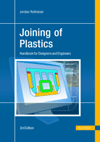The new pins were designed to meet the strength and alignment requirements of applications, such as DC power converter assemblies. DC power conversion devices typically consist of dual-stacked printed circuit boards (PCBs) with surface mount pins soldered to a metallic base board, which acts as a heat sink for high-wattage power components. The pins then connect to an FR4 PCB, which holds the majority of the logic circuitry.
The high wattage inherent to DC power devices and variations in thermal expansion can put significant stress on the solder joints. Plugging and unplugging the pins directly into external connectors also stresses the pin connections. Consistent alignment is critical to ensure that the pins mate correctly with the PCBs and connectors.
Traditional nail-head pins must be soldered manually with fixtures or robotically. In addition, nail-head pins typically require an excessively large solder fillet to meet pull-strength requirements.
The tread-head design solves these problems. The pattern on the bottom surface of the head consists of a round center reservoir with slots extending to the outside edges. This design facilitates out-gassing during reflow and creates a vacuum under the head that pulls the pin tightly into alignment on the pad. The low-profile head also promotes solder wicking, which improves the strength of the fillets.
For more information, call 858-535-0077 or visit www.autosplice.com.



